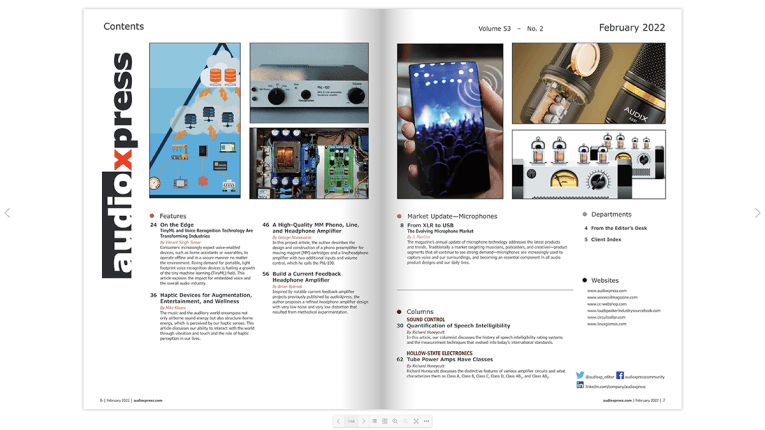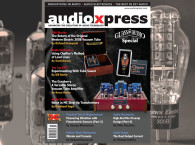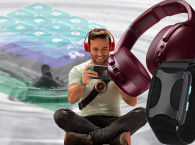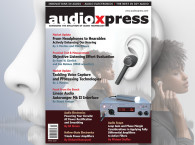 audioXpress' annual report on the state of the microphone product segment offers a comprehensive and unique perspective on this critical side of audio technology. From XLR and USB to Hardware/Software Hybrids is the title of the article that this year illustrates the Evolving Microphone Market. Traditionally a market primarily targeting musicians, podcasters, and creatives — product segments that all continue to be in strong demand — microphones are increasingly used to capture voice and our own surroundings, becoming an essential component in all audio product designs and our daily lives. And that's where the large volumes and business are being made, gradually influencing a convergence with other application segments. Get the complete, updated perspective in this issue.
audioXpress' annual report on the state of the microphone product segment offers a comprehensive and unique perspective on this critical side of audio technology. From XLR and USB to Hardware/Software Hybrids is the title of the article that this year illustrates the Evolving Microphone Market. Traditionally a market primarily targeting musicians, podcasters, and creatives — product segments that all continue to be in strong demand — microphones are increasingly used to capture voice and our own surroundings, becoming an essential component in all audio product designs and our daily lives. And that's where the large volumes and business are being made, gradually influencing a convergence with other application segments. Get the complete, updated perspective in this issue.
Offering a broader, high-level discussion specifically focused on voice recognition, this edition includes a great article by Vikrant Singh Tomar, the founder and Chief Technology Officer of Fluent.ai, discussing TinyML and Voice Recognition Technology On the Edge. Essential reading for audio developers working in this cutting-edge space, as a new generation of personal devices process data locally, taking the cloud and data centers out of the equation.
Consumers increasingly expect voice-enabled devices like home assistants or wearables to operate offline and in a secure manner no matter the environment. Rising demand for portable, light footprint voice recognition devices is fueling a growth of the tiny machine learning (TinyML) field. This article explains the impact for embedded voice and the overall audio industry.
And directly related to the topic of voice capture, in his Sound Control article, Richard Honeycutt writes about Quantification of Speech Intelligibility. Real or perceived, speech intelligibility issues should be understood, characterized, and quantified in order to be correctly addressed. In this article, our columnist discusses the history of speech intelligibility rating systems and the measurement techniques that evolved into today's international standards.
To broaden market and technology perspectives even further, this edition of audioXpress features an expert overview from Mike Klasco (Menlo Scientific) on Haptic Devices for Augmentation, Entertainment, and Wellness. Expanding on previous articles about bass shakers and motion platforms, this new article looks at exciting evolutions in haptic transducers and actuators that are being used in a growing number of applications - all of which depend upon audio sources for input. Examples include binaural beats and vibrations used as therapy and wellness concepts, embedded home theater approaches, vibrational chairs and seats, dream pillows, haptic belts, vests, headphones, and even shoes. As Mike Klasco explains, the music and the auditory fields encompass not only airborne sound energy, but also structure-borne energy, which is perceived by our haptic senses. The ability to interact with the world through vibration and touch is central to all of our lives, and now increasingly so.
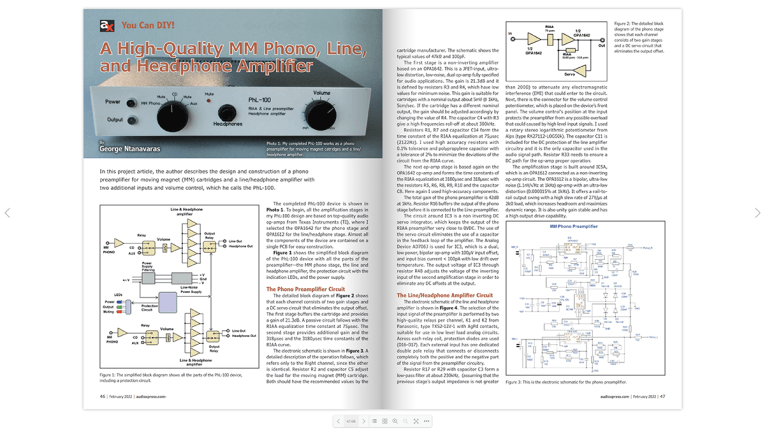
And of course, the practical, hands-on perspective is not absent from this edition, with two great DIY audio projects. First up is George Ntanavaras, with the design and construction of a phono preamplifier for Moving Magnet (MM) cartridges and a Line/Headphone amplifier with two additional inputs and volume control. All the amplification stages are based on top-quality audio op-amps such as Texas Instruments' OPA1642 for the phono stage and OPA1612 for the Line/Headphone stage. Almost all the components of the device are contained on a single PCB for easy construction.
The second project comes from Brian Bylenok, a DIY audio enthusiast, retired after a long career in the audio and technology systems industry. His Current Feedback Headphone Amplifier was inspired by notable projects previously published by audioXpress, such as Erno Borbely's "JFETs: The New Frontier," "The Willow Amplifier" by Robert Nance and the recent Audio Scope article "Very Low Distortion, Greater Than 400mA Output Composite Amplifier Headphone Driver" by Michael Steffes. In his build, the author proposes a refined headphone amplifier design with very low noise and very low distortion that resulted from methodical experimentation. Very worth the exploration.
And while we are on the topic of audio amplifiers, in his Hollow-State Electronics article, Richard Honeycutt reminds us that Tube Power Amps Have Classes. This is a very interesting article that places tube power stages in perspective, discussing the distinctive features of various amplifier circuits and what characterizes them as Class A, Class B, Class C, Class D, Class AB1, and Class AB2.
audioXpress is published 12 times per year, and available in print and online. Subscribing to the digital online version allows immediate access and is available here: www.audioxpress.com/page/audioXpress-Subscription-Services.html
If you wish to buy a single printed issue or the complete audioXpress archive on USB, from 2000 to 2021 (yes, including the latest issue), just visit our online shop at www.cc-webshop.com
Don't miss out, get your copy of audioXpress right now at www.gotomyxpress.com





